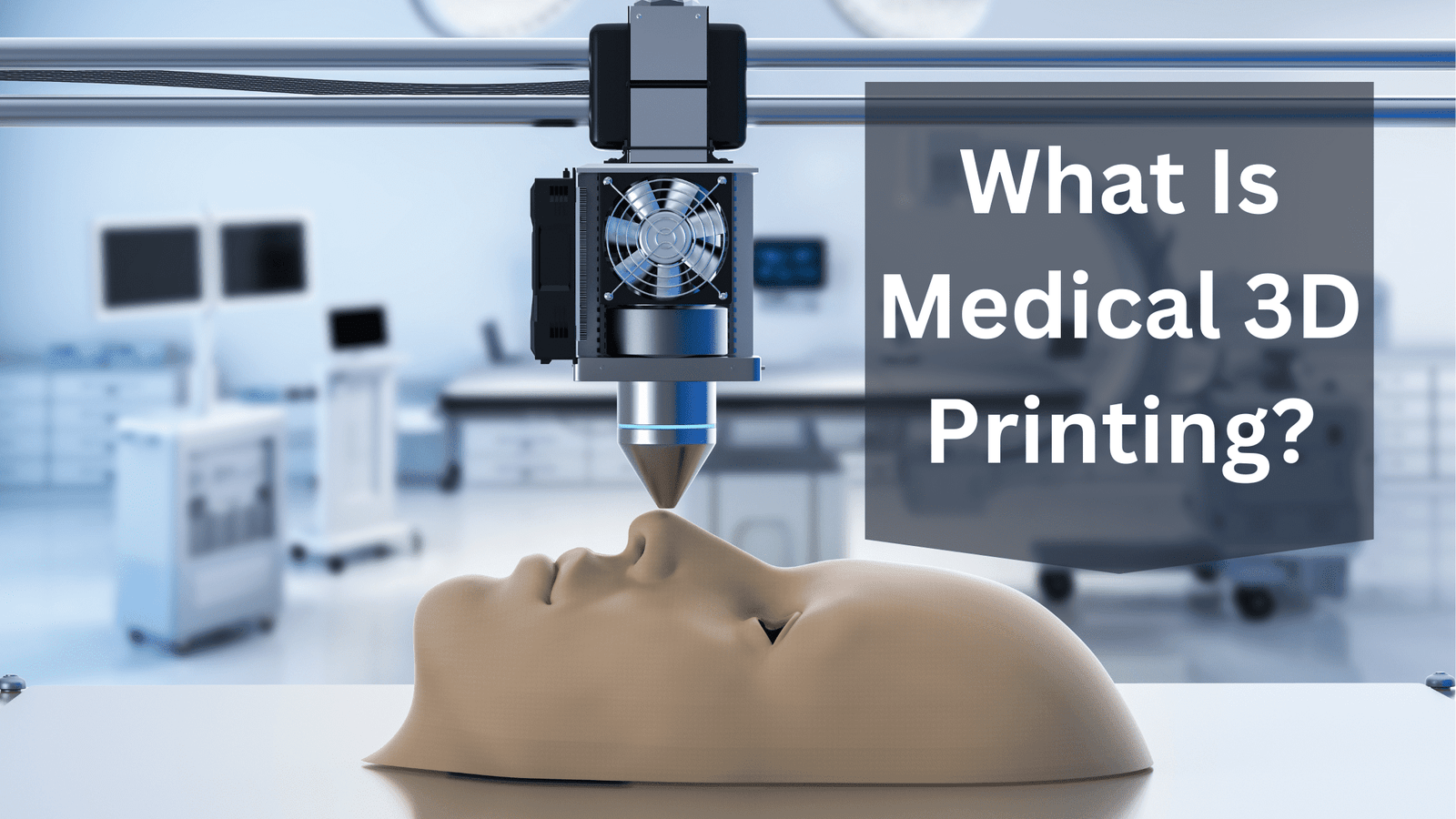Are you curious about the cutting-edge technology that is revolutionizing the healthcare field? Look no further than medical 3D printing, also known as additive manufacturing. This innovative process allows for the creation of three-dimensional objects using raw materials like metals, plastics, and ceramics. But what sets medical 3D printing apart is its ability to produce customized medical devices, prosthetic limbs, cranial implants, and dental restorations that perfectly match a patient’s anatomy.
In this blog post, we will delve into the details of medical 3D printing, exploring its process, applications, advantages, and regulatory landscape. Get ready to embark on a journey through the fascinating world of medical 3D printing and discover the future prospects of this groundbreaking technology.
Medical 3D Printing Process
Digital Blueprint: From CAD to MRI
The medical 3D printing process begins with a digital blueprint, which can be created using computer-aided design (CAD) software or obtained from a magnetic resonance image (MRI). This blueprint serves as the foundation for the 3D printer to build the desired medical device or implant. Whether it’s a prosthetic limb or a dental restoration, the digital file provides the necessary information for the printer to accurately reproduce the object.
Layer-by-Layer Manufacturing
Once the digital blueprint is ready, the 3D printer starts the layer-by-layer manufacturing process. It deposits the chosen raw material, such as metals, plastics, or ceramics, layer by layer, following the instructions in the digital file. This additive manufacturing technique allows for the creation of complex internal structures and intricate geometries that traditional manufacturing methods struggle to achieve. The layering process continues until the final product is complete.
Design Flexibility and Iterations
One of the key advantages of medical 3D printing is the design flexibility it offers. Unlike traditional manufacturing methods, where making design changes can be time-consuming and costly, 3D printing allows for easy modifications and iterations. If a patient-specific modification is required or a design improvement is identified, the digital file can be easily adjusted, and the printer can produce an updated version of the object. This flexibility enables healthcare professionals to tailor medical devices and implants to individual patients’ needs more efficiently.
Patient-Specific Customization
Perhaps the most significant advantage of medical 3D printing is its ability to create patient-specific medical devices and implants. By using the patient’s unique anatomy as a blueprint, 3D printing ensures a perfect fit and improved functional outcomes. Whether it’s an orthopedic implant or a cranial implant, the customization aspect of this technology revolutionizes patient care. It eliminates the “one-size-fits-all” approach and allows for personalized treatment plans, leading to enhanced patient satisfaction and better treatment outcomes.
Applications of Medical 3D Printing
Medical 3D printing has a wide range of applications in the healthcare industry, revolutionizing the way we approach patient care. Here are some notable applications:
- Orthopedic Implants: 3D printing allows for the creation of patient-specific orthopedic implants, such as hip and knee replacements. These custom-made implants fit the patient’s unique anatomy, resulting in better functional outcomes and reduced chances of complications.
- Prosthetic Limbs: Additive manufacturing has transformed the production of prosthetic limbs. With 3D printing, prosthetics can be tailored to precisely fit an individual’s residual limb. This customization improves comfort, functionality, and overall quality of life for amputees.
- Cranial Implants: Patients in need of cranial implants, such as those with skull deformities or traumatic injuries, can benefit from 3D printing. These implants are manufactured to match the patient’s specific cranial contours, resulting in better aesthetics and improved functional outcomes.
- Dental Restorations: 3D printing has also made its way into dentistry, allowing for the fabrication of crowns, bridges, and dental implants. The ability to create patient-specific dental restorations leads to better fitting, improved aesthetics, and enhanced patient satisfaction.
Advantages of Medical 3D Printing
Medical 3D printing offers several advantages over traditional manufacturing methods. Here are some key benefits:
- Customization: With 3D printing, medical devices and implants can be customized to match an individual patient’s anatomy. This level of personalization leads to better functional outcomes and improved patient satisfaction. Each device can be tailored to fit the unique needs of the patient, resulting in a more comfortable and effective solution.
- Complex Geometries: Traditional manufacturing methods often struggle to produce complex geometries, but 3D printing excels in this area. It enables the creation of intricate and detailed structures that would be challenging or impossible to achieve with other techniques. This opens up new possibilities for designing innovative medical devices and implants with improved functionality and performance.
- Reduced Manufacturing Time: Additive manufacturing significantly reduces manufacturing time compared to traditional methods. The layer-by-layer approach allows for the production of complex objects in a shorter timeframe. This leads to faster delivery of medical devices and implants to patients, potentially improving treatment outcomes and reducing wait times.
- Design Flexibility: The digital nature of 3D printing allows for easy design changes and iterations. In the healthcare field, where patient-specific modifications and adjustments are often necessary, this flexibility is invaluable. Healthcare professionals can easily make modifications to ensure the best fit and function for each patient, enhancing the overall quality of care.
Market Research and Trends:
The medical 3D printing market has witnessed remarkable growth and innovation, revolutionizing the healthcare industry by offering personalized solutions and advanced medical interventions. Utilizing cutting-edge technology, 3D printing enables the creation of intricate anatomical models, implants, and prosthetics tailored to individual patient needs. This market’s expansion is driven by the rising demand for customized healthcare solutions, increasing prevalence of complex medical conditions, and the continuous development of bio-printing techniques.
Conclusion:
In conclusion, medical 3D printing has emerged as a transformative force within the healthcare industry, offering unprecedented opportunities for innovation and personalized patient care. The ability to create intricate and customized medical implants, prosthetics, and anatomical models has not only revolutionized traditional medical practices but has also opened new avenues for research and education.
A market research company serves as the linchpin in the dynamic business landscape, providing invaluable insights that drive informed decision-making for businesses across various industries. Employing a diverse array of methodologies, from surveys and interviews to data analytics and trend analysis, these companies meticulously collect and analyze data to unearth market trends, consumer behaviors, and competitive landscapes.The 3D Medical Printing market reports provide in-depth assessments of industry trends, competitive landscapes, and prospective business opportunities.


